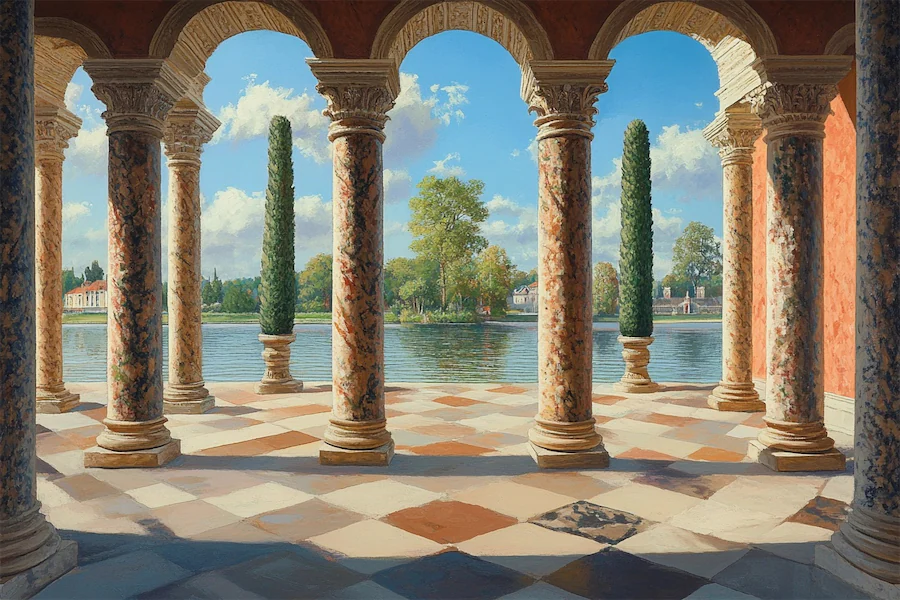The Anglo-Dutch architectural style, prominent from the late 17th to early 18th centuries, represents a fusion of English and Dutch design elements. This style emerged during a period of significant cultural and political exchange between England and the Netherlands, notably influenced by the reign of William III, who was of Dutch origin.
Introduction to Anglo-Dutch Columns
In Anglo-Dutch architecture, columns are integral components that reflect the harmonious blend of classical forms with Dutch stylistic nuances. These columns often exhibit a restrained classical aesthetic, contributing to the distinctive appearance of buildings from this period.
History and Origins of Anglo-Dutch Columns
The Anglo-Dutch style developed during the late 17th century, a time marked by close political and cultural ties between England and the Netherlands. This relationship facilitated the exchange of architectural ideas, leading to the adoption of Dutch design elements in English architecture. Columns in this style often drew inspiration from classical orders but were interpreted with a Dutch sensibility, resulting in unique adaptations.
Key Features of Anglo-Dutch Columns
Anglo-Dutch columns are characterized by several distinctive features:
- Materiality: Columns were typically constructed from brick or stone, materials prevalent in both English and Dutch architecture. The use of brick, in particular, was a hallmark of Dutch building practices, which influenced English construction methods during this period.
- Design: The columns often exhibited a restrained classical style, with proportions and detailing reflecting a blend of traditional classical elements and Dutch interpretations. This included the use of pilasters and engaged columns that added depth and articulation to facades.
- Form: While adhering to classical orders, Anglo-Dutch columns sometimes incorporated unique features such as the Solomonic (spiral) form, adding a dynamic visual element to the structures. This spiral design was present in Dutch architecture and made its way into English buildings through this stylistic exchange.
Applications of Anglo-Dutch Columns
In Anglo-Dutch architecture, columns served both structural and decorative purposes:
- Facades: Columns and pilasters were used to articulate building facades, creating rhythm and enhancing visual interest. They often framed windows and doors, contributing to the symmetrical and orderly appearance characteristic of the style.
- Entrances: Prominent entrances were often accentuated with columns, providing a grand and formal approach to buildings. This application highlighted the importance of the entryway and set the tone for the architectural experience.
- Interior Spaces: Within interiors, columns were employed to define spaces and support structural elements, while also serving as decorative features that reflected the building’s overall architectural language.
Considerations When Choosing Anglo-Dutch Columns
When selecting or designing Anglo-Dutch columns, several factors should be considered:
- Historical Accuracy: Ensuring that the column design aligns with the historical context and stylistic conventions of the Anglo-Dutch period is crucial for authenticity.
- Material Selection: Choosing appropriate materials, such as brick or stone, that reflect the traditional building practices of the time enhances the integrity of the design.
- Proportionality: Maintaining correct proportions and detailing is essential to achieve the balanced and harmonious aesthetic characteristic of Anglo-Dutch architecture.
Conclusion
Anglo-Dutch columns exemplify a unique architectural synthesis that emerged from the cultural and political interactions between England and the Netherlands in the late 17th and early 18th centuries. By combining classical elements with Dutch design sensibilities, these columns contribute to a distinctive architectural style that reflects a significant period of transnational exchange and influence.
